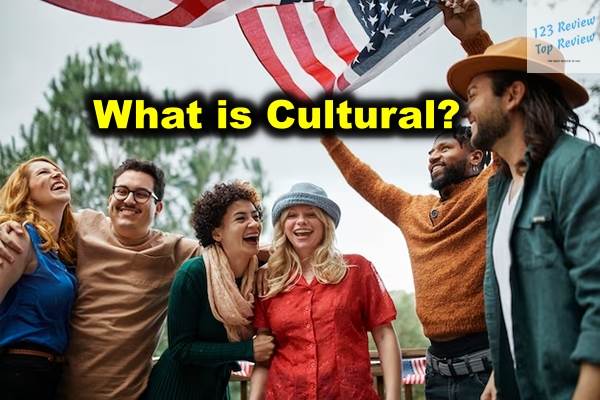It encompasses the shared beliefs, values, practices, arts, language, and norms that shape the identity and way of life of a community. Culture influences how people perceive the world, interact with each other, and express themselves, forming the foundation for social cohesion and continuity.

Understanding Culture
Culture encompasses the beliefs, practices, values, traditions, and artifacts that define a group or society. It serves as a collective framework through which individuals interpret their surroundings, understand their place in the world, and interact with others. Culture is not static; it is a dynamic and ever-evolving entity shaped by various influences, including historical events, social movements, technological advancements, and globalization. Understanding culture requires a deep appreciation of its complexities and the many elements that contribute to its formation and evolution.
Components of Culture
Culture is composed of several interconnected components, each playing a crucial role in shaping the identity and practices of a society:
- Beliefs and Values: These are the foundational ideas and principles that guide behavior within a society. Beliefs represent the accepted truths or convictions held by a group, such as religious doctrines or philosophical ideas. Values, on the other hand, are the moral standards that determine what is considered right, wrong, desirable, or undesirable. Together, beliefs and values form the ethical and moral compass of a culture.
- Norms and Customs: Norms are the unwritten rules of behavior that dictate what is acceptable or unacceptable within a society. They can be as simple as etiquette in social interactions or as complex as legal standards. Customs are the traditional practices passed down through generations, often tied to rituals, ceremonies, and everyday activities. These norms and customs help maintain social order and continuity within a culture.
- Language and Communication: Language is not just a tool for communication; it is a repository of cultural knowledge. Through language, people express their thoughts, convey their emotions, and share their experiences. It is the medium through which cultural knowledge, values, and norms are transmitted from one generation to the next. The nuances of a language, such as idioms, metaphors, and slang, often carry deep cultural significance, reflecting the unique worldview of a community.
- Symbols and Artifacts: Symbols are objects, gestures, or signs that represent something else within a culture, often carrying profound meaning. For example, a nation’s flag symbolizes its identity and sovereignty. Artifacts are the physical objects created by people, such as tools, clothing, art, and architecture. These items provide insight into the technological advancements, aesthetic preferences, and everyday life of a culture.
- Social Institutions: Social institutions are the organized structures within a society that regulate behavior and ensure the functioning of social life. These include the family, education, religion, government, and economic systems. Each institution plays a specific role in maintaining social order, transmitting cultural values, and providing a sense of stability and continuity.
Types of Culture
Culture is a broad concept that can be categorized into various types, each reflecting different aspects of human life and social organization:
- Material Culture: This type of culture involves the tangible, physical objects that people create and use in their daily lives. Material culture includes tools, technology, buildings, art, clothing, and other artifacts that people produce and utilize. These objects are not just functional; they also carry symbolic meanings and reflect the technological capabilities and aesthetic sensibilities of a culture.
- Non-Material Culture: In contrast to material culture, non-material culture consists of the intangible aspects of culture, such as beliefs, values, norms, language, customs, and traditions. These elements shape the way people think, behave, and interact with one another. Non-material culture is often more difficult to observe but is equally important in defining a society’s identity and guiding its social interactions.
- Popular Culture: Popular culture, often referred to as “pop culture,” encompasses the ideas, practices, and objects that are widely accepted and consumed by the masses at a given time. It includes trends in music, fashion, entertainment, media, and technology that shape the collective consciousness of a society. Popular culture is constantly changing, influenced by mass media, consumerism, and globalization.
- Subculture: A subculture is a group within a larger culture that differentiates itself through distinct beliefs, values, and practices. Subcultures often form around shared interests, such as music genres, hobbies, or social causes. While they may adopt some elements of the dominant culture, subcultures create their own unique identity and social norms, often in contrast to mainstream society.
- Counterculture: Counterculture refers to a subculture that actively rejects and opposes the dominant culture’s norms, values, and practices. Countercultural movements often arise in response to perceived social injustices or moral shortcomings within the mainstream culture. Examples include the hippie movement of the 1960s, which opposed the established norms of consumerism and war, advocating instead for peace, love, and environmentalism.
Cultural Identity and Diversity
Cultural identity is the sense of belonging to a particular culture or ethnic group. It is shaped by various factors, including nationality, ethnicity, language, religion, and shared history. Cultural identity provides individuals with a sense of continuity, purpose, and connection to their community. It influences how people see themselves and how they relate to others within and outside their cultural group.
Cultural diversity, on the other hand, refers to the existence of a variety of cultural or ethnic groups within a society. A culturally diverse society is one where people from different backgrounds coexist, bringing with them a rich tapestry of beliefs, traditions, languages, and practices. Embracing cultural diversity is crucial for fostering understanding, tolerance, and cooperation among different groups. It promotes social cohesion and enriches the cultural landscape by allowing for the exchange of ideas, creativity, and innovation.
The Role of Culture in Language
Language and culture are deeply interconnected, with culture playing a significant role in shaping language use, development, and comprehension. The relationship between language and culture is bidirectional: while language reflects the cultural norms and values of a society, it also influences and shapes those cultural elements.
Language as a Cultural Tool
Language serves as a powerful cultural tool, reflecting and reinforcing the values, beliefs, and practices of a society. It is through language that cultural knowledge is transmitted from one generation to the next, ensuring the continuity of cultural traditions. The way people use language—through dialects, idiomatic expressions, proverbs, and storytelling—can reveal much about their cultural background and worldview.
For example, the use of honorifics and polite forms in languages like Japanese reflects the cultural emphasis on respect and hierarchy. In contrast, the informal and direct communication style in American English may reflect the cultural values of individualism and equality. Language not only communicates information but also conveys the social relationships, power dynamics, and cultural norms within a society.
Influence of Culture on Language Learning
Cultural context plays a crucial role in language learning. Understanding the cultural nuances of a language, such as idiomatic expressions, humor, and social norms, is essential for effective communication. Language learners who immerse themselves in the culture associated with a language are more likely to achieve fluency and comprehension. They gain a deeper understanding of the language’s connotations, pragmatics, and usage in various social contexts.
For example, learning Spanish in a Latin American country allows learners to experience the culture firsthand, from participating in local festivals to understanding the importance of family and social gatherings. This cultural immersion helps learners grasp the subtleties of the language, such as when to use formal versus informal speech or how to interpret non-verbal cues.
Moreover, language learning is often influenced by the cultural attitudes and values of the learners themselves. For instance, in collectivist cultures where group harmony and conformity are valued, language learners may be more attuned to the social norms and expectations of communication. In contrast, learners from individualistic cultures may focus more on self-expression and creativity in language use.
Language Varieties and Cultural Contexts
Language varieties, including dialects, sociolects, and registers, are influenced by cultural contexts. Different regions, social classes, and professions may develop their own distinct ways of speaking, which reflect their cultural identity. These language varieties are not just linguistic differences; they carry cultural significance and often serve as markers of social identity and group membership.
For example, the use of African American Vernacular English (AAVE) in the United States is not only a linguistic variation but also a reflection of the cultural history and experiences of African American communities. AAVE carries with it a rich tradition of oral storytelling, music, and resistance to oppression.
Similarly, the use of regional dialects in countries like Italy or China reflects the cultural diversity within those nations. Each dialect carries unique cultural expressions, idioms, and traditions, contributing to the cultural richness of the region.
Understanding the cultural context of language varieties is essential for effective communication, especially in multicultural societies or global interactions. It allows individuals to navigate different social settings, build rapport with diverse groups, and avoid miscommunication or cultural faux pas.
Cultural Communication
Effective communication across cultures requires an understanding of both verbal and non-verbal cues, as well as the cultural norms that influence communication styles. Cultural communication involves not only the exchange of information but also the negotiation of meaning, identity, and social relationships.
Intercultural Communication
Intercultural communication is the process of exchanging information between individuals from different cultural backgrounds. It requires sensitivity to cultural differences, including language, gestures, social norms, and values, to avoid misunderstandings and build meaningful connections. Intercultural communication is essential in our increasingly globalized world, where interactions between people from diverse cultures are commonplace.
Successful intercultural communication involves several key skills:
- Cultural Awareness: Being aware of one’s own cultural biases and assumptions, as well as recognizing and respecting the cultural differences of others.
- Active Listening: Paying close attention to the verbal and non-verbal cues of the other person, and seeking clarification when needed to ensure accurate understanding.
- Adaptability: Being flexible and open to adjusting one’s communication style to accommodate the cultural norms and expectations of the other person.
- Empathy: Understanding and appreciating the perspectives, emotions, and experiences of the other person, even if they differ from one’s own.
- Cultural Intelligence: Developing the ability to navigate and bridge cultural differences in various social and professional contexts, such as international business, diplomacy, or multicultural communities.
Barriers to Cultural Communication
Despite the importance of intercultural communication, several barriers can hinder effective communication between individuals from different cultural backgrounds:
- Language Differences: Language is one of the most obvious barriers to intercultural communication. Misunderstandings can arise when individuals speak different languages, dialects, or have varying levels of language proficiency. Even when both parties speak the same language, differences in accents, slang, or idiomatic expressions can lead to confusion.
- Cultural Assumptions: Preconceived notions about other cultures can lead to misinterpretations and conflict. For example, stereotypes or ethnocentrism—the belief that one’s own culture is superior—can create barriers to open and respectful communication. Cultural assumptions can also lead to misunderstandings of non-verbal cues, such as eye contact, gestures, or personal space, which may have different meanings in different cultures.
- Non-Verbal Miscommunication: Non-verbal communication, such as gestures, facial expressions, body language, and tone of voice, plays a significant role in intercultural communication. However, these non-verbal cues can vary widely across cultures, leading to miscommunication. For example, a gesture that is considered polite in one culture may be offensive in another. Understanding the cultural context of non-verbal communication is crucial for avoiding misunderstandings and building rapport.
- Cultural Norms and Expectations: Different cultures have different norms and expectations regarding communication, such as the appropriate level of directness, formality, or emotional expression. For example, in some cultures, it is considered rude to directly disagree or criticize someone, while in others, open and direct communication is valued. Being aware of these cultural norms and adapting one’s communication style accordingly can help overcome barriers and foster positive interactions.
The Role of English in Global Communication
English has become a global lingua franca, serving as a common language for communication between people from different linguistic backgrounds. Its widespread use in business, education, science, and international relations has made it a crucial tool for global communication. However, the dominance of English in global communication also raises questions about linguistic diversity and cultural preservation.
On one hand, English as a global language facilitates communication and collaboration across borders, enabling people from different cultures to connect, share knowledge, and work together. It provides a common platform for international business, diplomacy, and academic exchange, contributing to globalization and cultural exchange.
On the other hand, the spread of English can also lead to the marginalization of other languages and cultures. As English becomes the dominant language in global communication, there is a risk that smaller languages and the cultural knowledge they carry may be lost. This raises concerns about linguistic imperialism, where the promotion of one language comes at the expense of others.
To address these concerns, it is important to promote multilingualism and cultural diversity in global communication. Encouraging the learning of multiple languages, preserving endangered languages, and valuing cultural differences in communication can help create a more inclusive and equitable global society.
Culture in Education
Culture plays a vital role in shaping educational practices, influencing both curriculum development and teaching methods. Education is not just a process of transmitting knowledge; it is also a means of preserving and promoting cultural values, traditions, and identities.
Teaching Culture in Language Programs
Incorporating culture into language programs is essential for developing students’ intercultural competence. Language learning is not just about acquiring vocabulary and grammar; it also involves understanding the cultural context in which the language is used. Teaching cultural norms, values, and traditions alongside language skills helps learners communicate more effectively and understand the cultural context of the language they are studying.
For example, teaching Japanese involves not only learning the language’s syntax and vocabulary but also understanding the cultural importance of politeness, respect, and social hierarchy. Students learn how to use honorifics appropriately, how to interpret non-verbal cues, and how to navigate social interactions in a culturally appropriate manner.
Similarly, teaching Spanish involves understanding the cultural diversity of the Spanish-speaking world, from the different dialects spoken in Spain and Latin America to the cultural practices and traditions unique to each region. Students learn how to communicate effectively in different cultural contexts, whether in formal business settings or informal social gatherings.
Incorporating culture into language programs can also involve using authentic cultural materials, such as literature, films, music, and art, to expose students to the cultural richness of the language. This not only enhances language learning but also fosters a deeper appreciation of the culture and its people.
The Impact of Culture on Curriculum
Culture influences curriculum design by determining what knowledge is considered valuable and how it is taught. Educational systems are shaped by the cultural values and beliefs of the society in which they operate, and these values are reflected in the curriculum.
For example, in some cultures, education is seen as a means of transmitting traditional knowledge and values, with an emphasis on memorization, discipline, and respect for authority. In other cultures, education may prioritize critical thinking, creativity, and individualism, with a focus on inquiry-based learning and student-centered approaches.
The curriculum is also influenced by the cultural context in which it is developed. In multicultural societies, the curriculum may be designed to reflect the diversity of the student population, incorporating perspectives from different cultural and ethnic groups. This can include teaching about the history, literature, and contributions of various cultural groups, as well as promoting multiculturalism and social justice.
However, cultural biases can also influence curriculum design, leading to the marginalization of certain cultural groups or perspectives. For example, a curriculum that focuses exclusively on the history and achievements of the dominant culture may overlook the contributions of minority groups or perpetuate stereotypes. To create an inclusive and culturally responsive curriculum, educators must be aware of these biases and strive to represent diverse perspectives and voices.
Strategies for Integrating Culture in Education
Integrating culture into education requires intentional and thoughtful strategies that recognize the cultural backgrounds of students and the cultural context of the curriculum. Here are some strategies for integrating culture in education:
- Incorporate Diverse Perspectives: Include materials and viewpoints from various cultures in the curriculum, such as literature, history, art, and music from different cultural groups. This helps students develop a broader understanding of the world and appreciate the richness of cultural diversity.
- Promote Cultural Awareness: Encourage students to explore and appreciate different cultures through projects, discussions, and exchanges. This can include activities such as cultural festivals, guest speakers, field trips, and intercultural dialogues that expose students to different cultural practices and perspectives.
- Use Culturally Relevant Teaching Methods: Adapt teaching methods to align with the cultural backgrounds of students, making learning more relatable and effective. This can involve using examples, analogies, and teaching strategies that resonate with students’ cultural experiences and prior knowledge.
- Foster an Inclusive Classroom Environment: Create a classroom environment that values and respects cultural diversity, where all students feel included and valued. This can involve setting ground rules for respectful communication, addressing cultural biases and stereotypes, and creating opportunities for students to share their cultural experiences and perspectives.
- Engage with the Community: Involve the local community in the educational process by inviting community members to share their cultural knowledge and experiences with students. This can help bridge the gap between school and community and provide students with real-world examples of how culture shapes their lives.
Cultural Change and Adaptation
Culture is not static; it is dynamic and constantly evolving in response to internal and external influences. Cultural change and adaptation are natural processes that occur as societies encounter new ideas, technologies, and experiences.
Globalization and Cultural Exchange
Globalization has led to increased cultural exchange, resulting in the blending of cultural practices and the spread of ideas across borders. While this can lead to greater understanding and cooperation, it can also challenge traditional cultural identities.
Globalization has facilitated the flow of information, goods, and people across borders, leading to the exchange of cultural practices and the creation of new cultural forms. For example, the spread of technology, such as the internet and social media, has enabled people to connect and share cultural content from different parts of the world, leading to the globalization of popular culture.
However, globalization can also challenge traditional cultural identities, as local cultures are exposed to global influences and pressures. This can lead to cultural homogenization, where local cultures are overshadowed by dominant global cultures, or cultural hybridization, where new cultural forms emerge from the blending of local and global influences.
The Evolution of Cultural Norms
Cultural norms evolve over time, influenced by changes in technology, economy, and society. What was once considered acceptable or taboo may shift as new ideas and values emerge.
For example, changes in technology have transformed cultural norms around communication, work, and social interactions. The rise of digital technology and social media has changed the way people communicate, work, and engage with the world, leading to new cultural practices and norms.
Similarly, changes in the economy and society, such as the shift from agrarian to industrial economies, have transformed cultural norms around work, family, and gender roles. These changes have led to the emergence of new cultural values and practices, such as the emphasis on individualism, consumerism, and gender equality.
The evolution of cultural norms is a complex and ongoing process, shaped by a range of factors, including technological advancements, social movements, and global influences. Understanding these changes requires a deep appreciation of the historical, social, and cultural context in which they occur.
Cultural Retention vs. Cultural Assimilation
Cultural retention involves preserving traditional cultural practices and values, while cultural assimilation refers to the process of adopting the dominant culture’s norms and behaviors. Balancing these two processes is a challenge for individuals and communities in multicultural societies.
Cultural retention is important for maintaining cultural identity and continuity, especially in the face of external pressures to assimilate. It involves preserving traditional practices, values, and languages that define a cultural group and passing them on to future generations.
However, cultural assimilation is also a reality in multicultural societies, where individuals and communities may adopt aspects of the dominant culture to fit in or succeed. This can involve learning the dominant language, adopting new cultural practices, or conforming to social norms.
Balancing cultural retention and assimilation is a complex and ongoing process, shaped by factors such as migration, education, and social integration. It requires individuals and communities to navigate the tensions between preserving their cultural heritage and adapting to new cultural contexts.
Conclusion
Culture is a complex and multifaceted concept that shapes our identities, behaviors, and interactions. It is both a product of our social environment and a force that influences our perceptions, values, and actions. Understanding culture is essential for navigating the diverse and interconnected world we live in today.
From the role of culture in shaping communication and education to the impact of globalization and cultural change, culture is a dynamic and evolving phenomenon that reflects the complexities of human society. By recognizing and appreciating the diversity of cultures around the world, we can foster greater understanding, respect, and cooperation among individuals and communities.





